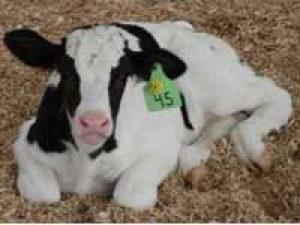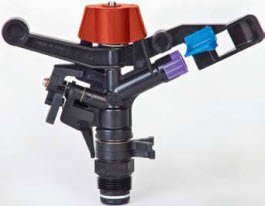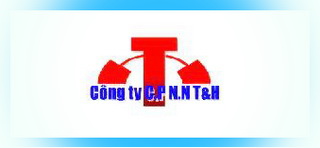How fattening male calves
Veal is the meat of a calf

Veal is often compared to beef but is lighter in colour and finer in texture. Veal and beef, however have little in common.
- Bob Veal, from dairy calves that are slaughtered when only a few days to 150 lbs. (USA only)
- Formula-Fed (or “milk-fed”) veal, from dairy calves that are raised on a nutritionally complete milk formula supplement. The meat colour is ivory or creamy pink, with a firm, fine and velvety appearance. Usually marketed as veal when they reach 18-20 weeks of age (450-500 lbs).
- Non-Formula-Fed (”red” or “grain-fed”) veal, from dairy and beef calves that are raised on grain, hay or other solid food in addition to milk. The meat is darker in colour, and some additional marbling and fat may be apparent. Usually marketed as calf rather than veal at 5-6 months of age (650-700 lbs).
 The veal industry’s support for the dairy industry goes beyond the purchase of surplus dairy calves. It also buys large amounts of milk by-products. Almost 70% of veal feeds (by weight) are dairy milk products. Most popular are whey and whey protein concentrate (WPC ) by-products of the manufacture of cheese. Dairy Milk by-products are sources of protein and lactose (energy). Skim milk powder, casein, buttermilk powder and other forms of milk by-products are used from time to time. Buttermilk is the liquid which remains after the fat in cream is turned into butter.
The veal industry’s support for the dairy industry goes beyond the purchase of surplus dairy calves. It also buys large amounts of milk by-products. Almost 70% of veal feeds (by weight) are dairy milk products. Most popular are whey and whey protein concentrate (WPC ) by-products of the manufacture of cheese. Dairy Milk by-products are sources of protein and lactose (energy). Skim milk powder, casein, buttermilk powder and other forms of milk by-products are used from time to time. Buttermilk is the liquid which remains after the fat in cream is turned into butter.
The Evolution from Stall raising
In the very beginning milk fed veal was raising primarily by the dairy farmer as a method of gaining some economic advantage from the many dairy bull calves born each year that where not required for breeding. It was not long until the farmer found that you could not satisfactorily raise this young animal in the midst of the senior cattle members of his herd.
economic advantage from the many dairy bull calves born each year that where not required for breeding. It was not long until the farmer found that you could not satisfactorily raise this young animal in the midst of the senior cattle members of his herd.
He found that a separate micro-climate was the only means of raising a dairy calf through the perils of early growth. The growing stall was thus born. In the beginning these separated growing areas where almost totally enclosed. This was thought to curtail the spread of disease and provide a clean and comfortable environment in which the dairy calf could flourish.
The years have proven the early growers were correct. They reduced mortality substantially. As time and management philosophy and modern medication developed the stall was changed. It became larger and more open. The stall provides an opportunity for individual handling of the calf. This, over the years has provided the single most important contribution to our ability to learn and understand the veal calf and its requirements. However, many animal welfare activists oppose the use of these stalls. Veal stalls were banned in the UK (under the 1987 “Welfare of Calves Regulations” act which came into effect in 1990) and throughout the European Union in 2007.
 There have been some controversy in veal-raising methods over the years, including housing, use of antibiotics and hormones. In Europe, these issues have all been addressed. In North America, there has been a general lag in these areas but there are no use of hormones now and use of antibiotics follows withdrawal guidelines. This is actively monitored by government agencies. The housing issue is being addressed. The AVA ( American Veal Association) announced in 2007 the phasing out of “crates”. The tethering of calves in the USA was mostly due to economics as the cost of housing is reduced. This made veal raising viable for a family farming operation.In North America, there has been a recent move to more group housing, although it has been used since 1981 in various forms as discussed below.
There have been some controversy in veal-raising methods over the years, including housing, use of antibiotics and hormones. In Europe, these issues have all been addressed. In North America, there has been a general lag in these areas but there are no use of hormones now and use of antibiotics follows withdrawal guidelines. This is actively monitored by government agencies. The housing issue is being addressed. The AVA ( American Veal Association) announced in 2007 the phasing out of “crates”. The tethering of calves in the USA was mostly due to economics as the cost of housing is reduced. This made veal raising viable for a family farming operation.In North America, there has been a recent move to more group housing, although it has been used since 1981 in various forms as discussed below.
Provitello Farms - the future of raising calves for veal
Raising Veal calves in group settings
 The key to raising veal calves in a group settings is management. The Grober/Delft Blue Program is one of the very few, if not the only successful program in existence today. Europe is raising milk fed veal only in pens of 4-6 animals.
The key to raising veal calves in a group settings is management. The Grober/Delft Blue Program is one of the very few, if not the only successful program in existence today. Europe is raising milk fed veal only in pens of 4-6 animals.
Delft Blue in Canada has experience in group housing since 1981. the photo right is of the early automatic Milkomat feeding machines used. Calves were kept in groups of 60 to one machine often divided into sub-groups of 30 or so.
Provitello Farms in the USA has now been working in this area since 2004. Provitello was the first North American farm to dedicate a unique facility devoted to calf welfare.
“The initiative behind our long history in evolved housing was not novelty driven, but pursued from the realization that animal welfare impacts growing conditions.”
“Our starter barn will always be an evolution – Provitello Farms are committed to the integration of SCIENCE and ART. Provitello Farms continually blends the best of academia with our own experience. Casting caring eyes upon our calves allow us to meet the need of the individual, whilst addressing the needs of the group.”
Monitoring is the key to quality.
It was the individual requirements of calves that provided the need for stall raising in the first place, but now calves can be successfully monitored in group settings of groups even up to 60 plus calves.
Each individual calf is monitored by a transponder attached to an ear tag. This transponder can be read, each time the calf approaches the feeding station by a computer. It can control feed availability, weigh the calf and even take its temperature automatically. Each calf can be identified by it’s own bar code.
Computer controlled feeding programs take the pressure off the calf to eat twice a day at great speed associated with stall rearing. Digestion is better and more compete, resulting in a healthier and better muscled calf.
Computer controlled feeding has a profound affect on the health of the calf. It reduces the stress normally associated with group housing systems. It allows the farmer to be on top of problems almost before they start. It allows all of the calves to get all they require in the way of feed and allows the farmer more time to manage.
The whole objective in trying new building, new programs and new management techniques is aimed at finding the ultimate situation that provides the best product raised in an atmosphere that provides for the calf’s welfare needs, the environment and good working conditions for the farmer.
Managing the environment
Manure is considered by the majority of the consuming public to be waste material. However it contains valuable nutrients and organic matter that are invaluable. These nutrients are part of the continuous recycling that is livestock agriculture. Nutrients are used to enhance the growth of crops, which in turn, are used to feed more livestock. Agriculture is a continuous process that fully utilizes its own by products to enhance efficiency.
Delft Blue Veal developed a system, in which we use aerobic and anaerobic bacterial processes to put these nutrients in the form that they can most readily be absorbed in the soil, for maximum crop utilization.
This system creates nutrients at two levels of intensity. This increases the flexibility of soil and crop application. This same process will also separate the nutrients from the water that carries them so that the water can be recycled for cleaning barns. This can, during certain periods reduce the use of water from wells by as much as 30%. This is all part of environmental stewardship.
Delft Blue Veal has also been experimenting with utilizing these nutrients to grow crops hydroponically in a greenhouse. This research also makes use of warm air from veal barn exhaust fans.
Delft Blue Veal, is undertaking a ground breaking project for the calf producing agri-industry ( started in 2009).
The liquid calf manure (1.8% solids) is being used as the base material for producing methane gas to drive an engine (Genset) that will produce enough electricity to run five farms feeding 15,000 calves daily. Then taking the used material and making a truly organic fast acting fertilizer (Digestate) .Check out the project at Grober Green























